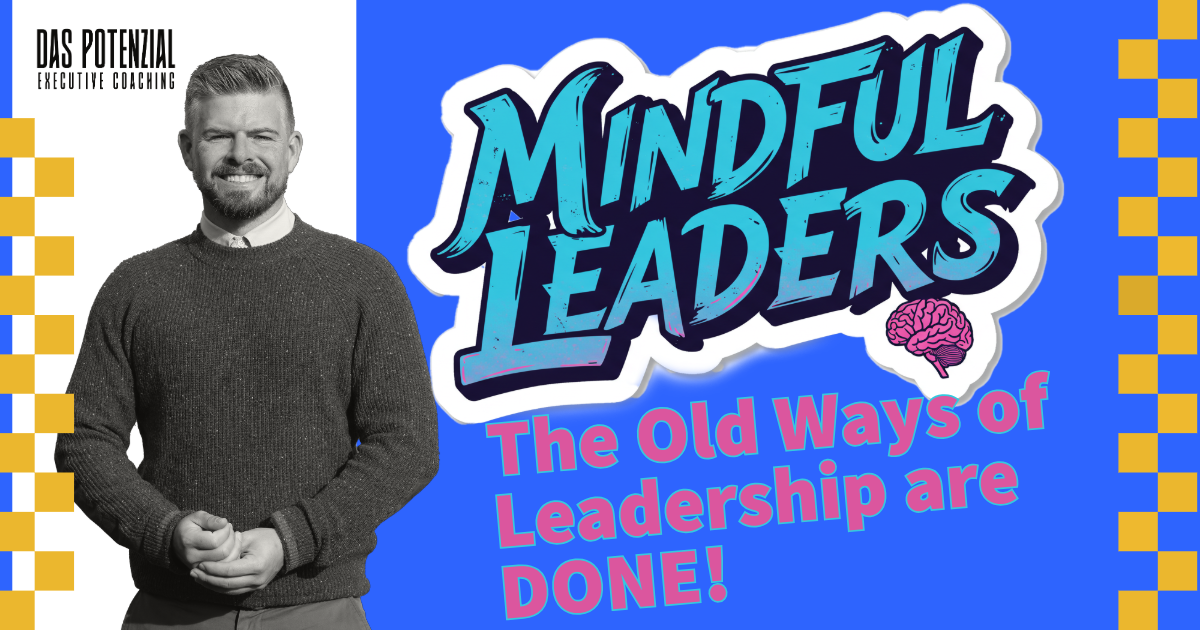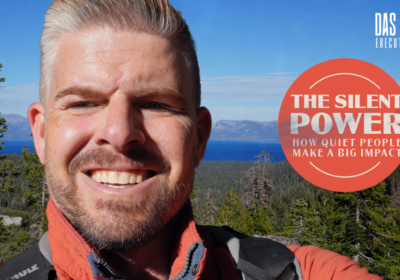The Unbreakable Leader! How to get there! First step: Mindfulness

The Path to Unbreakable Leadership
In today’s demanding business world, mindful leadership has emerged as a critical skill for success. Indeed, the modern workplace is a whirlwind of deadlines, demands, and distractions. Consequently, stress, burnout, and a constant barrage of tasks often leave even seasoned leaders feeling overwhelmed. However, mindful leaders are finding a better way. In such a challenging environment, mindfulness has emerged not as a fleeting trend but as a transformative tool for professional and personal growth. Furthermore, when coupled with the power of adventure, mindful leadership becomes not only more accessible but also deeply impactful, fostering resilience, adaptability, and clarity. Therefore, this blog post explores the path to becoming an Unbreakable Leader through mindful leadership, drawing on examples, techniques, and authoritative references to offer actionable insights.
The Business Case for Mindful Leadership
Mindfulness has evolved from a “soft skill” to a strategic asset, essential for Unbreakable Leaders. In essence, for senior leaders navigating complex environments, mindful leadership provides numerous benefits:
- Adaptability in Complexity: The business landscape demands agility. Therefore, mindfulness enables leaders to stay calm and focused amidst rapid change and uncertainty, making effective decisions even in challenging circumstances. For example, as highlighted in the Harvard Business Review article, Mindfulness Can Literally Change Your Brain, mindfulness strengthens cognitive flexibility.
- Enhanced Decision-Making: Similarly, mindful leaders are less likely to succumb to biases or impulsive reactions. Research from the University of Wisconsin-Madison shows that mindfulness practices improve working memory and focus, leading to more thoughtful decisions.
- Emotional Intelligence and Team Dynamics: Moreover, mindful leadership fosters emotional intelligence, enhancing empathy, active listening, and open communication. This builds trust within teams, creating a safe space for innovation and collaboration.
- Work-Life Integration: Additionally, mindful leaders recognize the interconnectedness of work and life, enabling them to balance responsibilities and maintain well-being across all areas. This prevents burnout and ensures sustained performance.
- Resilience and Long-Term Success: Ultimately, Unbreakable Leaders require resilience. Mindfulness equips leaders to manage stress, recover from setbacks, and maintain focus on long-term goals.
Adventure-Based Mindfulness: A Synergistic Approach to Resilient Leadership
While mindfulness can be practiced in various settings, incorporating elements of adventure can make it both easier to adopt and more impactful.
How Adventure Enhances Mindful Leadership
Adventure—whether it’s hiking, kayaking, or stepping into an unfamiliar environment—naturally brings us into the present moment. This heightened awareness is key to mindfulness. Here’s how adventure enhances the practice:
- Sensory Immersion: The rustling leaves, the feel of the wind, the vastness of the sky – adventures engage our senses fully. As a result, this sensory richness quiets the mind’s chatter, anchoring us in the “now” and making present moment awareness more accessible. It’s harder to be caught up in worries about the future or regrets about the past when your senses are fully engaged in the present experience.
- Challenge and Growth: Adventures often present challenges, whether physical (a steep climb), mental (navigating an unfamiliar route), or emotional (facing a fear of heights). Overcoming these challenges builds resilience, a key trait of an Unbreakable Leader. Specifically, each small victory in an adventure reinforces the belief that you can handle uncertainty and adversity, strengthening your ability to face workplace challenges with greater confidence.
- Metaphorical Connections: The problem-solving required during an adventure directly mirrors the skills needed for effective leadership. For example, consider a kayaking trip. Navigating a rapid river requires quick decision-making, adaptability to changing conditions, and effective teamwork. These same skills are essential for navigating a complex business deal or leading a team through a period of change. In essence, the adventure becomes a powerful metaphor for the challenges and opportunities of leadership.p.
Practical Example of Unbreakable Leadership in Action
Imagine a leadership retreat where participants embark on a challenging multi-day hike. In particular, the physical demands of the trek, navigating varied terrain, and managing resources (water, food, energy) naturally bring participants into a heightened state of awareness. Additionally, guided mindfulness exercises are integrated throughout the hike, such as focusing on the rhythm of their steps, the sensation of their breath, or the beauty of the surrounding landscape. Ultimately, this experience fosters the resilience and mental clarity essential for Unbreakable Leaders.
One participant, a senior executive, reflected on how the experience of navigating a particularly challenging section of the trail mirrored the experience of leading her team through a difficult product launch. The need to stay present, adapt to unexpected obstacles (like a sudden downpour or a change in trail conditions), and support her fellow hikers mirrored the skills she needed to lead effectively in the workplace. The shared experience of overcoming the physical challenges of the hike fostered a sense of camaraderie and strengthened team bonds. The executive realized that the mindfulness she practiced on the trail could be directly applied to managing stress, making better decisions under pressure, and fostering a more supportive and collaborative team environment back at the office. The experience not only deepened her mindfulness practice but also provided a tangible and relatable example of how those skills could be applied in her leadership role.
Practical Mindfulness Techniques for Leaders
Here are some practical techniques for integrating mindfulness into your life:
1. Mindful Breathing for Unbreakable Leaders
Start your day or meetings with a brief breathing exercise. Find a comfortable position – even sitting at your desk is fine. You don’t have to close your eyes if that feels awkward in a professional setting; you can simply soften your gaze. Focus on the sensation of your breath entering and leaving your body. Notice the rise and fall of your chest or abdomen. It’s perfectly normal for your mind to wander (and it will!); just gently redirect your attention back to your breath. Even just 60 seconds of focused breathing can make a noticeable difference in your focus and stress levels. Try it before a big meeting or when you’re feeling overwhelmed.
2. Body Scan Meditation for Resilience
This technique involves bringing awareness to different parts of your body, noticing any sensations without judgment. You can do this lying down, sitting, or even standing. Start with your toes – wiggle them and notice how they feel – and gradually work your way up to the top of your head, paying attention to each part of your body. Don’t try to change anything; simply observe any sensations – warmth, tingling, tightness, or nothing at all. This practice can help you become more aware of physical tension that you might not even realize you’re holding, and help you release it. It’s a great way to de-stress during a short break or before going to sleep and it only takes 1 minute or however long you might want to do it.
3. Mindful Walking for Present Leadership
Pay attention to the sensations of walking – the feeling of your feet on the ground, the movement of your body, the sights and sounds around you. Engage all your senses and be fully present in the act of walking. This you can do at any given point and nobody will notice that you do it, but you will feel the difference.
4. Reflective Journaling for Self-Awareness
Set aside even just 5 minutes each day to reflect on your experiences and jot down a few thoughts in a journal. It doesn’t have to be fancy – a notebook or even your phone’s notes app will work. Don’t worry about perfect grammar or style; just write freely about what’s on your mind. Don’t judge your thoughts or feelings; simply observe them and record them. This practice can help you identify patterns in your thinking and behavior, leading to greater self-awareness and better decision-making. Try reflecting on a specific challenge you faced or a success you experienced.
Case Studies: Mindfulness in Action
1. Team Coaching for Enhanced Collaboration
A multinational tech company introduced mindfulness workshops for project leaders, including mindful communication exercises and team-based meditation sessions. As a result, they observed a 25% improvement in collaborative problem-solving and a noticeable reduction in workplace conflicts. Team members reported feeling more heard and understood, leading to greater trust and psychological safety.
2. Higher Education: Cultivating Mindful Leaders
Similarly, at Stanford University, mindfulness programs for MBA students have demonstrated improved focus, better stress management, and enhanced leadership capabilities. Students who participated in mindfulness training reported feeling more resilient in the face of academic pressure and better equipped to handle the demands of leadership roles.
The Limitations of Mindful Leadership Practices
While mindful leadership offers numerous benefits, it’s important to acknowledge that mindfulness is not a panacea. Although it fosters self-awareness and clarity, it cannot resolve structural issues like unclear roles or poor organizational design. Furthermore, it’s important to acknowledge that mindfulness can be misinterpreted as a quick fix or a way to suppress difficult emotions. It’s not about ignoring problems; it’s about approaching them with greater awareness and clarity. Mindfulness requires a time commitment and consistent practice to be effective, which can be a challenge for busy professionals. Finally, it’s also important to consider the cultural context in which mindfulness is being implemented, as practices may need to be adapted to be culturally sensitive and appropriate.
Building a Mindful Organization
Mindfulness doesn’t have to remain an individual practice. Instead, when embraced at an organizational level, it can transform workplace culture. Mindful leadership, team practices, and organizational values create an environment where presence, awareness, and collective well-being thrive.
Steps to Foster a Culture of Mindful Leadership
- Leadership Commitment: Senior leaders should model mindfulness practices, demonstrating their value to the organization.
- Training and Resources: Provide employees with access to mindfulness workshops, apps, and resources.
- Incorporate into Policies: Include mindfulness breaks or retreats as part of employee wellness programs.
- Evaluate and Adapt: Regularly assess the impact of mindfulness initiatives and refine them based on feedback.
Embrace Mindful Leadership for Lasting Success
Mindfulness is more than just a wellness trend; it is a critical skill for navigating the complexities of the modern business world. In fact, when coupled with the transformative power of adventure, mindfulness becomes an even more potent tool for fostering resilience, adaptability, and unbreakable success. By embracing mindful leadership, senior executives can create not only a thriving workplace but also a fulfilling and balanced life.
Take the First Step on Your Mindful Leadership Journey: Download Your Free Guide!
Ready to explore the power of mindful leadership and adventure? Download our free guide, “Mindful Leadership Techniques for Executives,” or contact us though our Website or Linkedin to learn more about our executive coaching programs.
References
(Include your full references here, formatted consistently. Examples below – replace with your actual sources.)
- Davidson, R. J., Kabat-Zinn, J., Schumacher, J., Rosenkranz, M., Muller, D., Santorelli, S. F.,… & Sheridan, J. F. (2003). Alterations in brain and immune function produced by mindfulness meditation. Psychosomatic medicine, 65(4), 564-570.
- Hülsheger, U. R., Alberts, H. J., Feinholdt, A., & Lang, J. W. (2013). Benefits of mindfulness at work: the role of mindfulness in emotion regulation, emotional exhaustion, and job satisfaction. Journal of Applied Psychology, 98(2), 310.
- Mindfulness Can Literally Change Your Brain, Harvard Business Review. [Link to Article]
- Eggers, T. (2023). Achtsamkeit im Business-Coaching. Coaching-Magazin, 2, 28–33. [Link to Article]
- Kabat-Zinn, J. (2013). Full Catastrophe Living: Using the Wisdom of Your Body and Mind to Face Stress, Pain, and Illness. Bantam.
Inspired By…
This exploration of mindfulness in the professional sphere finds its roots in Tanja Eggers’ insightful article, ‘Achtsamkeit im Business-Coaching. Die Macht von Mindfulness im arbeitsweltlichen Kontext,’ published in Coaching-Magazin. While Eggers masterfully illuminates the power of mindfulness in business coaching, das Potenzial here lies in extending that concept beyond the boardroom. We’re venturing further, integrating the spirit of adventure and discovery, to unlock the hidden potential within professional development. Think of this as a mindful expedition, where we leverage the core principles of Eggers’ work to chart new territories. You can find the full magazine here and the article itself here.




